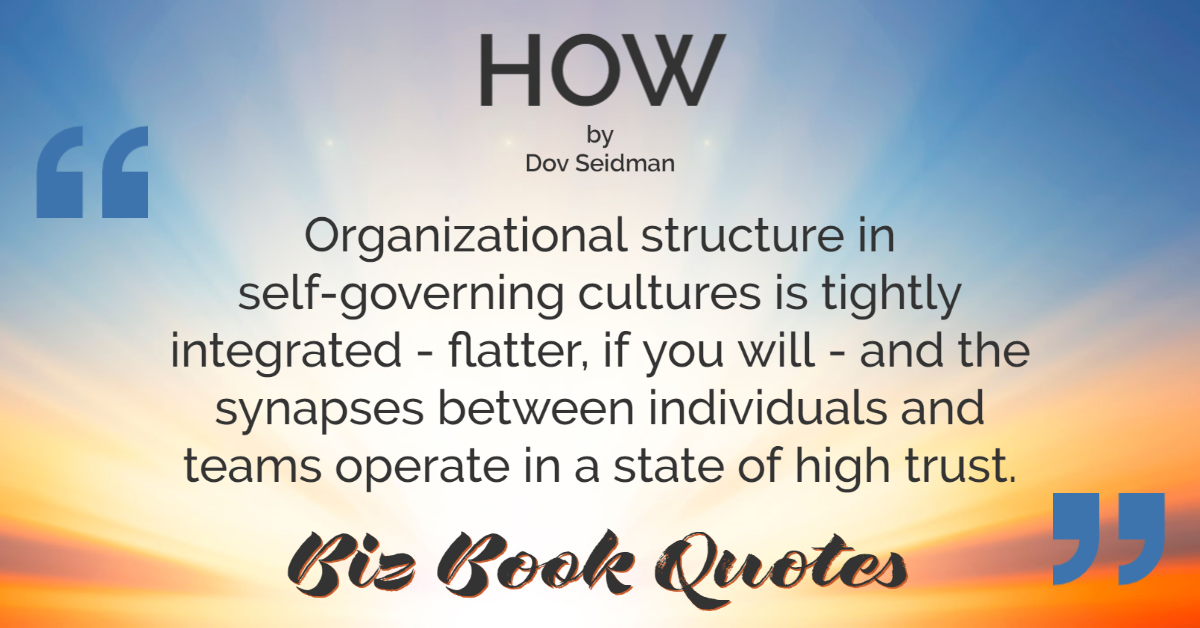 |
Right people in the right seats love clarity. Knowing the numbers they need to hit, they enjoy being part of a culture where all are held accountable.
|
124 |
 |
Trust creates an open culture in which everyone feels comfortable talking about issues as they arise.
|
133 |
 |
Though cultures within large organizations often share many traits, group cultures are generally singular; they differ from organization to organization, from team to team, and from unit to unit.
|
219 |
 |
…informed acquiescence cultures tend to be management-oriented, with an established managing class and a well-entrenched bureaucracy.
|
223 |
 |
Culture occurs at the synapses where people interact.
|
227 |
 |
Organizational structure in self-governing cultures is tightly integrated – flatter, if you will – and the synapses between individuals and teams operate in a state of high trust.
|
233 |
 |
With everyone accountable for the team’s success, no one tolerates slacking; the culture becomes self-enforcing and feedback becomes the name of the game.
|
233 |
 |
In self-governing cultures, the role of every individual is to lead and be a leader.
|
234 |
 |
Self-governing cultures coalesce around mission, promise, and the pursuit of significance, a journey that is, in many ways, its own reward.
|
239 |
 |
As we move forward into an ever more transparent world, culture – the character of an organization – is now everyone’s responsibility.
|
244 |